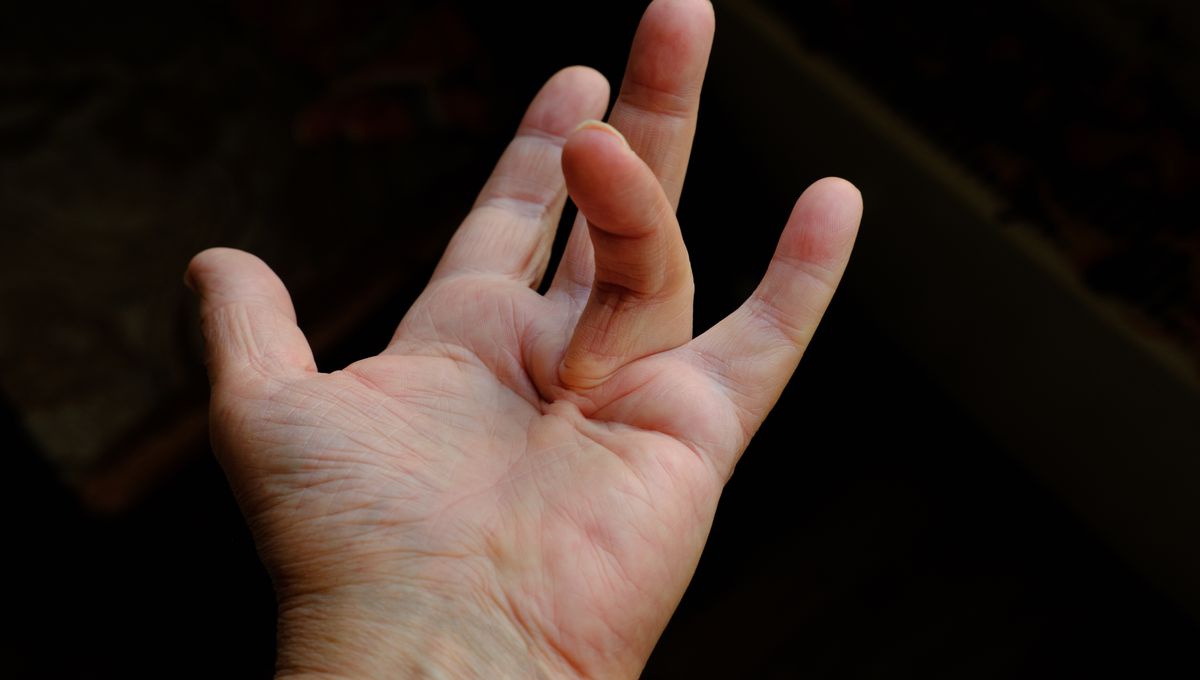
“Viking Disease”, or Dupuytren’s contracture, is an unusual disorder where the tissue under the skin of a hand becomes thicker and less flexible, often leaving one or more fingers in a permanently bent position. For a long time, researchers knew the condition was more common in Northern Europeans than in those with African ancestry, but now a new study has shown that it may be linked to Neanderthal heritage.
The condition was named after the French surgeon, Guillaume Dupuytren, who first described the mechanisms that led to the characteristic deformations in the early 1830s. It usually starts with small hard nodules under the skin of the palm which, over time, thicken and form cords that pull the finger into a flexed position that cannot be straightened. Although it can affect any finger, it is commonly seen in the ring and little fingers.
The exact causes of Dupuytren’s contracture are currently unknown, but scientists have previously identified several risk factors that seem to influence its development. These include an individual’s age, whether they smoke, drink lots of alcohol, have diabetes or epilepsy, and whether there is a family history of the condition. This latter factor has been given more weight by research conducted over the last few decades. For instance, in 2015, a Danish study found that Dupuytren’s contracture had 80 percent heritability, which led them to conclude that genetics played an important role in the development of the condition.
Interestingly, it seems it is more common in people with Northern European ancestry than those of primarily African descent. One study, conducted in 1999, found that there was a 30 percent prevalence among Norwegians over the age of 60. It was this geographic distribution that led to its nickname – “Viking disease”.
There is a distinct geographic difference in how much genetic ancestry modern humans have from archaic species, such as Neanderthals and Denisovans. It seems that those who come from sub-Saharan African countries have very little genetic links to Neanderthals and Denisovans who tended to live in Europe and Asia until around 42,000 years ago. In contrast, people who are from outside of Africa have far higher evidence of genetic heritage from these extinct human species. These regional differences brought on by archaic gene variations can contribute to specific characteristics as well as disease prevalence within certain populations.
It was this disparity in the geographic distribution of the disease that led Hugo Zeberg, assistant professor at the Department of Physiology and Pharmacology, Karolinska Institutet, and his team to investigate its genetic origins.
“Since Dupuytren’s contracture is rarely seen in individuals of African descent, we wondered whether gene variants from Neanderthals can partly explain why people outside of Africa are affected”, Zeberg said in a statement.
The team used data from 653,751 people – 7,871 had Dupuytren’s contracture while the remaining 645,880 were a control population. This information was drawn from the UK Biobank, the FinnGen R7 collection, and the Michigan Genomics Initiative.
They found 61 genome-wide significant variations associated with Dupuytren’s contracture, three of which were Neanderthal in origin, including the second and third most strongly associated ones. This led the researchers to conclude that Neanderthal ancestry is a significant factor in the prevalence of Dupuytren’s contracture in Europeans today.
“Present-day genomes contain haplotypes that are similar to archaic genomes”, Zeberg and his colleagues wrote, “both because they inherited haplotypes from populations ancestral to both modern humans and archaic humans and because modern humans interbred with archaic groups when they met less than 100,000 years ago.”
The results go a long way to show the importance of considering the role our genetic heritage may have had on disease prevalence. However, the team stress that these connections should not be taken too far.
“This is a case where the meeting with Neanderthals has affected who suffers from illness,” Zeberg added, “although we should not exaggerate the connection between Neanderthals and Vikings.”
The paper is published in Molecular Biology and Evolution.
Source Link: “Viking Disease”, An Unusual Hand Condition, May Come From Neanderthal Ancestors